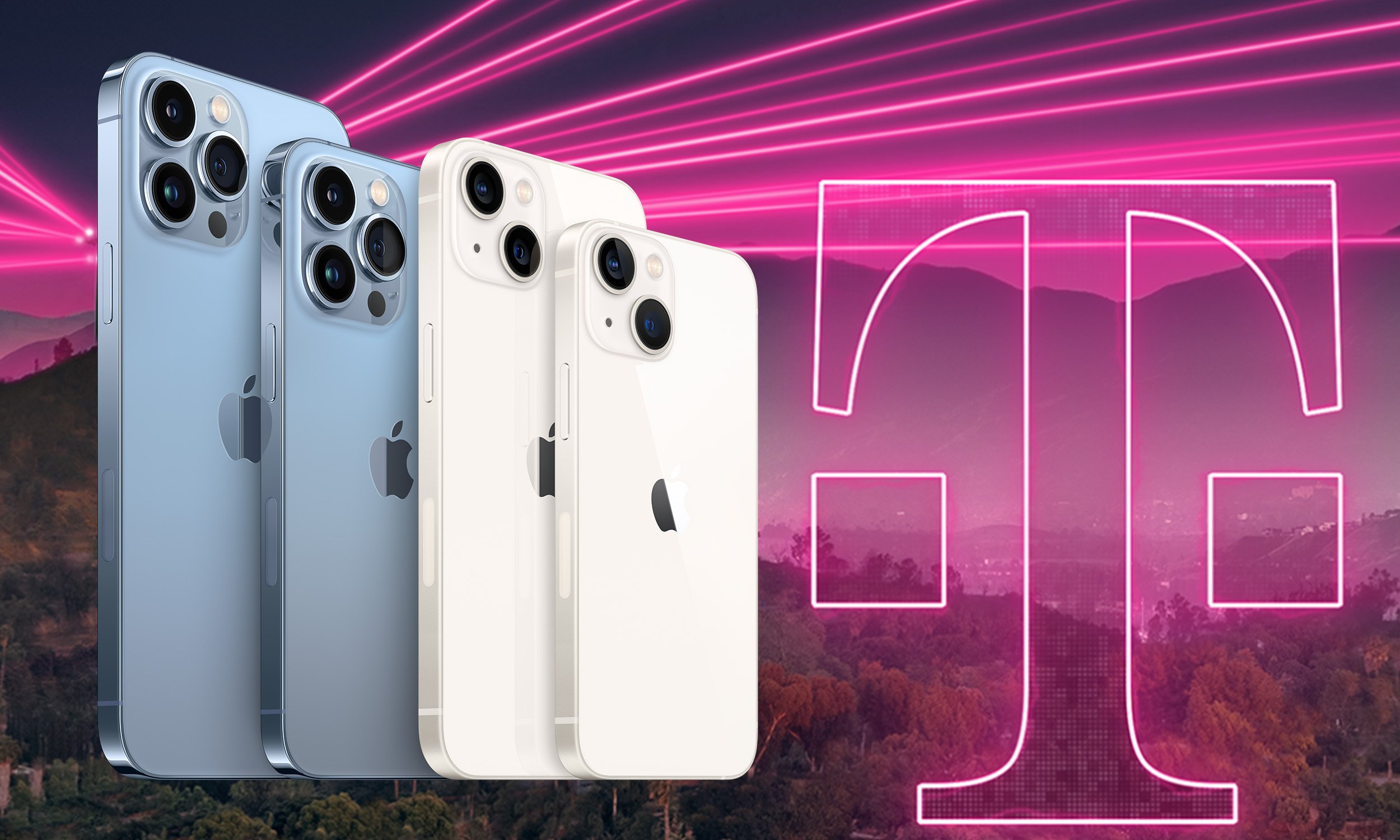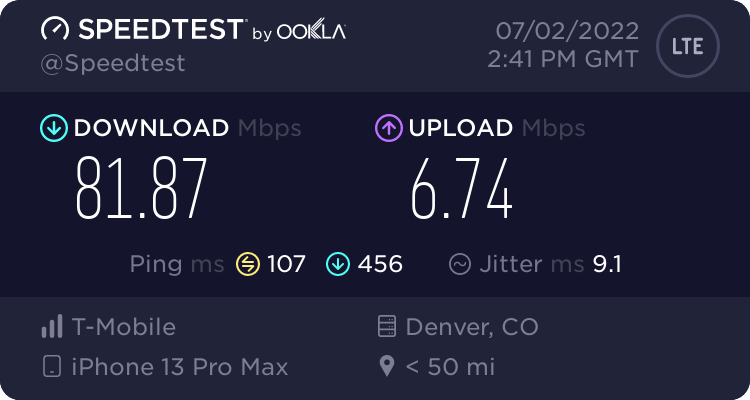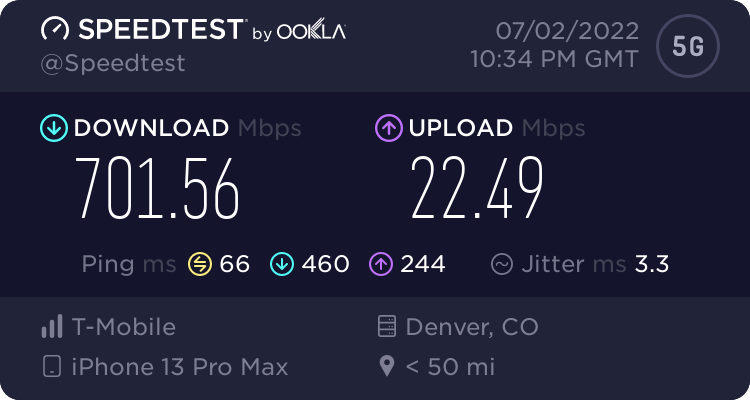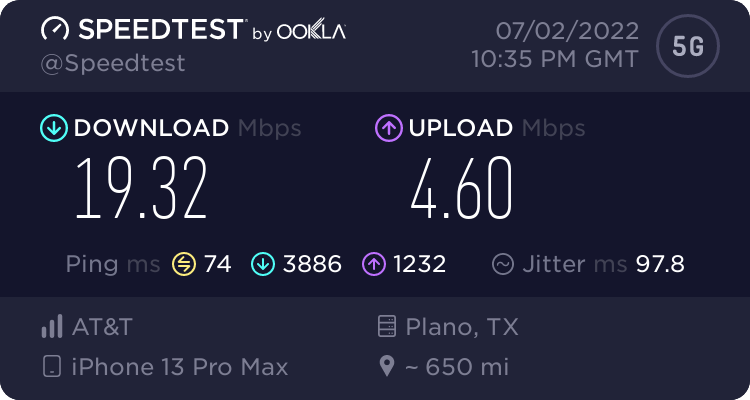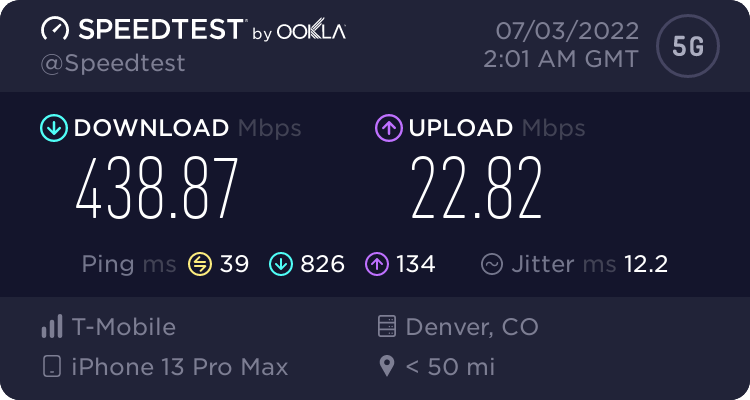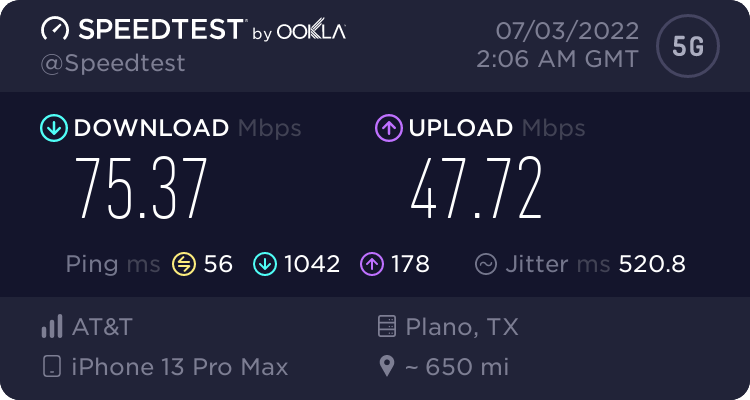Why I decided to switch to T-Mobile
I never thought I’d say this, but I just switched cell phone carries. The weird part is that I switched to T-Mobile, but the real kicker...I’m excited about it.
I’ve been with AT&T since my parents gave me my first cell phone in high school. Let’s call it about 20 years. I never had any issues with it until I moved to Superior, Colorado last year. Our entire apartment complex and most of the surrounding town are complete dead zones for AT&T. I found some spots where I had decent 5G service, but whenever I saw that “5GE” logo on my iPhone (a misleading name for their older LTE network), I knew I wasn’t going to be able to do anything on my phone regardless of how many bars I had. It just didn’t work.
In 2022, not having reliable cell service in a suburb that sits between a major city and a sizable college town is pretty much unacceptable.
I checked out a couple of Facebook groups to see what people in the area had to say about their carries, and everyone seems to have complaints about all of them. That’s par for the course, though. My problem was, it wasn’t just an annoyance. I couldn’t use my cell phone unless I was on my WiFi network. As soon as I was out of range of my apartment, my iPhone and Apple Watch were both useless. It was really annoying when I’d go for runs through the neighborhood. If I happened to be streaming a podcast or a playlist that wasn’t downloaded to my Apple Watch, it would just go dead.
AT&T used to offer an app called Mark the Spot where you could notify them of dead zones, but they pulled it a couple of years ago. Maybe they were overwhelmed with complaints and decided that ignorance is bliss?
The absolute dealbreaker was when the Marshall Fire was ripping through our town. My girlfriend and I left the apartment in separate cars and almost immediately got separated, and I wasn’t able to call her until we were way outside of town. I’m inclined to chalk it up to heavy network load as a lot of people were evacuating their homes, but it’s always been like that and hasn’t gotten any better.
I’ve been researching the different 5G networks, and what I’ve discovered is that T-Mobile had the right strategy from the start. When it acquired Sprint back in 2018, it immediately gained the ability to build a great mid-band 5G network, allowing for greater capacity with much better speeds than LTE. Meanwhile, Verizon went all in on the impressive but relatively useless mmWave flavor of 5G, while AT&T has...seemingly done nothing but rename their legacy network a couple times.
AT&T and Verizon are both working on their C-band 5G networks, but not only is it taking a while to roll them out nationwide, it’s going to take even longer in Denver due to the number of satellite ground stations in the area that use the part of the spectrum they need. Verizon made a deal that might let them deploy much earlier than AT&T, but it still may not happen until late 2023.
Each year, PCMag does a nationwide study of all the carriers, ranking them based on a number of factors. This year, they named T-Mobile the best carrier in the nation and, more importantly, in the Denver area.
Ok, so I was leaning toward T-Mobile. But how could I be sure it’d be any better than AT&T? Enter T-Mobile Test Drive.
T-Mobile Test Drive lets you add a SIM card to your phone with a temporary data plan. You get to use it for 30 days or up to 30GB of data, whichever comes first. To make things even easier, if you have an unlocked phone that supports eSIM (a software SIM rather than a physical card), you can set the whole thing up through an app. All iPhones since 2018 support eSIM (starting with XS and XR).
I downloaded the T-Mobile Test Drive app, and within a few minutes, I had a brand new temporary data plan using the available eSIM on my iPhone 13 Pro Max. It was surprisingly easy.
Sitting on the couch in my apartment, it was immediately obvious that the issues are in fact AT&T’s fault. Check out the signal difference:
And here’s the download speed inside my apartment (bear in mind, this is on T-Mobile’s LTE network...not even 5G):
Then we went out to dinner in Westminster, which is about 15 minutes east of where we live. Here’s the T-Mobile 5G UC (Ultra-Capacity, or mid-band 5G) performance:
And here’s AT&T’s 5G:
Then we ended up in downtown Denver at the 16th Street Mall. Here’s T-Mobile:
Here’s AT&T:
Aside from the overall speeds, you can tell by the Jitter numbers in the bottom right that AT&T’s network is not as reliable (high jitter can lead to more interruptions).
It’s not even a contest. AT&T’s network is so woefully behind T-Mobile’s, I’m in shock.
So I’m sold...I went out this past weekend and switched. The entire process took about 10 minutes and I didn’t have to do anything. The price (including my Apple Watch) is identical, plus I’m getting $15 off my Netflix subscription each month. And the performance gains have already been a huge quality of life improvement. I walked all over my neighborhood listening to a podcast and it didn’t hiccup once. I even made a phone call and it was flawless. Finally!
The only potential issue may arise when we go out into the mountains. According to PCMag’s research, AT&T’s legacy network is still best for remote rural areas. But honestly, we don’t go off the grid often enough for that to be an issue, and hopefully Apple will be adding emergency satellite connectivity to iPhones within the next couple of years.
AT&T will continue working on their mid-band 5G rollout, but it’ll be at least a year or two before it’s widespread in the Denver area. If AT&T gets their act together in a couple years, maybe I’ll consider going back. Considering the improved performance that can be had right now, I’m pretty excited about my new network.
Who’s your carrier and what’s the performance like in your neck of the woods? Let me know in the comments!
